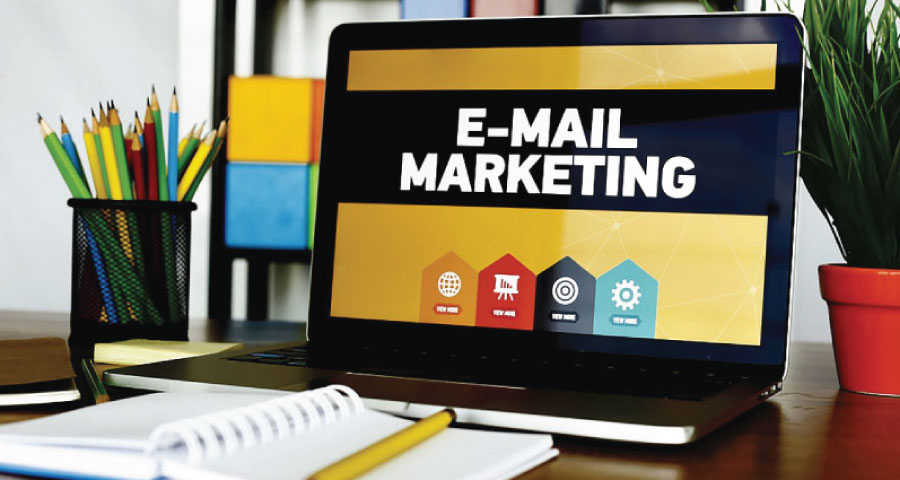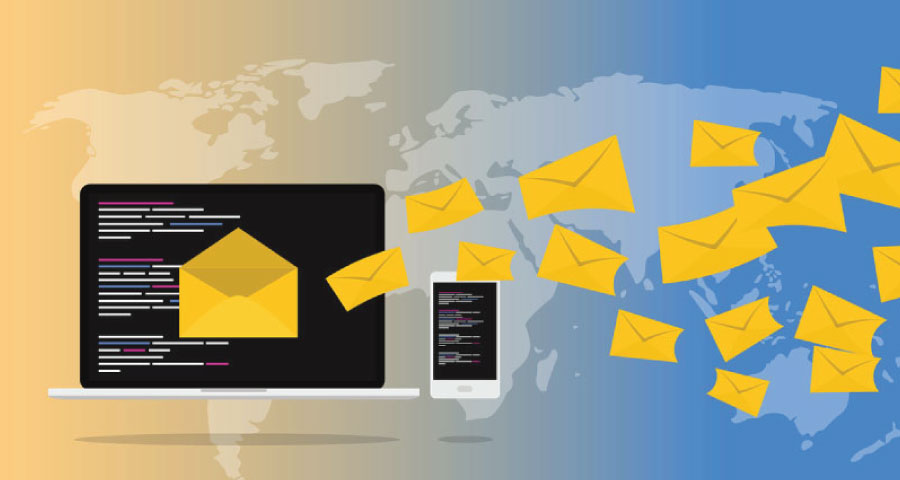Professional Email Marketing
Email marketing is one of the most effective digital marketing techniques, enabling direct communication with customers, subscribers, and potential clients. The primary areas targeted by email marketing include lead generation, selling products or services, brand promotions, fundraising, and building relationships.

Step-by-Step Email Marketing Process
There are mainly 7 steps involved to start email marketing, follow the below-listed steps to understand the email marketing process.
- Define email marketing goals
- Collect emails and categorize them
- Choose a good email marketing platform
- Create an email template / write an effective email
- Test your email template
- Send emails and monitor
- Collect previous data, analyze, and improve
1. Define email marketing goals
The most crucial step in starting email marketing is to identify your goals. Determine whether your objectives include lead generation, increasing sales, building brand awareness, or driving website traffic. Clearly defining these objectives will help you plan an effective and cost-efficient email marketing strategy and will enable you to measure the success of your campaign.

2. Collect emails & categorize them
This step involves collecting the email addresses of your targeted audience or potential customers. Generally, emails are collected via the website's sign-up forms, offer useful resources & ask for email subscriptions, social media, offering freebies, etc.
Once you get the email list now divide the list into small segments based on your business and sales criteria for example purchase history, locations, engagement level, etc. Email categorization enables you to send more targeted and personalized emails which has a higher potential to provide a high rate of engagement and better conversion rate.
3. Choose a good email marketing platform
The third step is the choose a good email marketing platform according to your email marketing needs. It is advised to choose email marketing platforms that provide features like email templates, email automation, list management, deliver & not deliver analytics data, etc... read: Top 10 email marketing platforms
It is important to understand that there are two types of email marketing platforms. First, allows you to send unlimited emails to a limited number of contacts (email id), for example, you can put 500 email IDs in your contact list and you can send them unlimited emails again and again.
Second, in this then you can add an unlimited number of email IDs to your contact list but the number of email messages that are allowed to send is limited in numbers. So you can identify which kind of email marketing platform and plan is required for your business.

4. Create an email template / write an effective email
Once you have chosen the right email marketing platform and prepared your email list, now is the time to write an effective email. For a better look and feel, you can also choose a suitable email template provided by the email marketing platform.
Your email must be to the point with a clear objective, users do not like to read bulk content so it should be in precise size, you can also use images for better understanding. It is important to notice that you have properly set up the unsubscribe or unfollow link in the email so that the email should properly deliver to the user's inbox not in their spam list.
5. Test your email template
Once your email/email template is ready, now for testing purposes, send one email to your email address and properly check it for any kind of errors, or spelling mistakes, also make sure it is delivered to your inbox, not in the spam or promotion list. Know how to stop emails from going to junk or spam. If your email is delivered in the spam or promotion category of your inbox, kindly check the words, sentences, or URL used in the email typing, it may contain some words or sentences which is making it fall in the spam or promotion list.
6. Send emails and monitor
Once you have tested your email template, if everything is ok, you are now ready to start your email marketing campaign. Start sending emails and keep monitoring the sending campaign.

7. Collect previous data, analyze, and improve
Once you have completed the email-sending process, now the time is to conduct a deep analysis of previous email marketing campaign data such as open rates, bounce rates, click-through rates, conversion rates, unsubscribe rates, and any other key performance indicators (KPIs).
After analysis of the campaign data now check whether it is according to the category standard or not, if yes! congratulations you have conducted your first successful email marketing campaign and if not it means you have done mistakes, now find out the mistakes and improve them for the next campaign.
Email Marketing FAQ.
Q1: Why the email marketing important?
Email marketing is a widely adopted marketing strategy by businesses of all sizes across various industries. According to the Direct Marketing Association (DMA) survey, around 87% of businesses are using email marketing to communicate with their audience and promote their products or services.
Q.2 How often should I send emails to my subscribers?
There is no fixed frequency, it depends on several factors, including the preferences of your audience, the nature of your business, and the type of content you provide. For example, if you have an online e-commerce business then the email sending frequency should be more than if you have a medical-related business.
Let's see some data related to subscriber expectations, according to MarketingSherpa data 86% of subscribers would like to receive promotional emails from companies at least monthly, and 61% preferred to receive them weekly. It all depends on the nature of the business and the types of subscribers.
Q3: How can I measure the success of my email campaigns?
There are several factors involved in measuring the success rate of email campaigning, which are described below.
- Open Rate: It is the percentage of recipients who opened the email that was sent from you.
- Click-Through Rate (CTR): It is the percentage of emails in which recipients clicked on a link mentioned in the email content.
- Conversion Rate: The percentage of email recipients who completed your email campaign objective, such as making a purchase or filling out a form.
- Bounce Rate: It is the percentage of emails that were undeliverable.
- Unsubscribe Rate: It is the percentage of recipients who do not want to receive further emails in the future.
Q4: How can I improve email open rates?
Some techniques can help you improve email open rates.
- Keep your emails visually appealing, with a clean and professional layout.
- Ensure your emails are mobile-friendly and display properly on different devices.
- Test your email designs across various email clients and devices to ensure compatibility and proper rendering.
- Include a clear call-to-action (CTA) that stands out and directs recipients to take the desired action.
- Personalize your emails with recipient names and relevant content based on their preferences or past interactions.